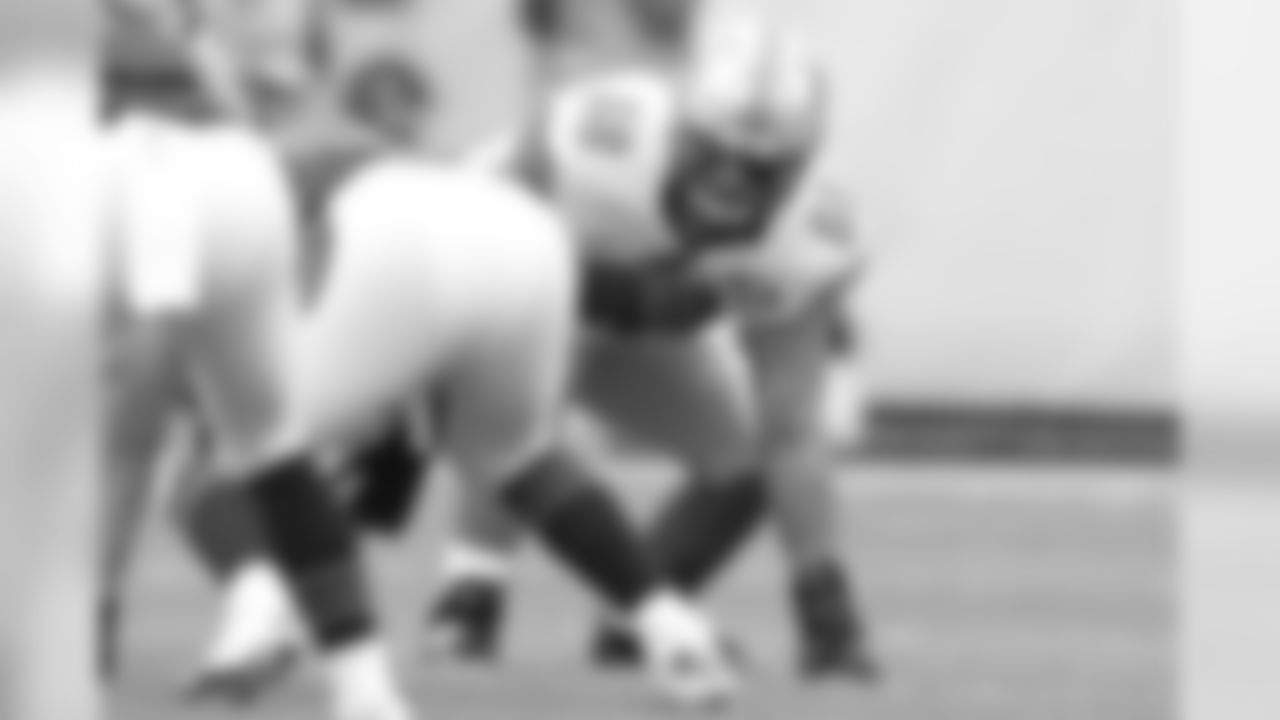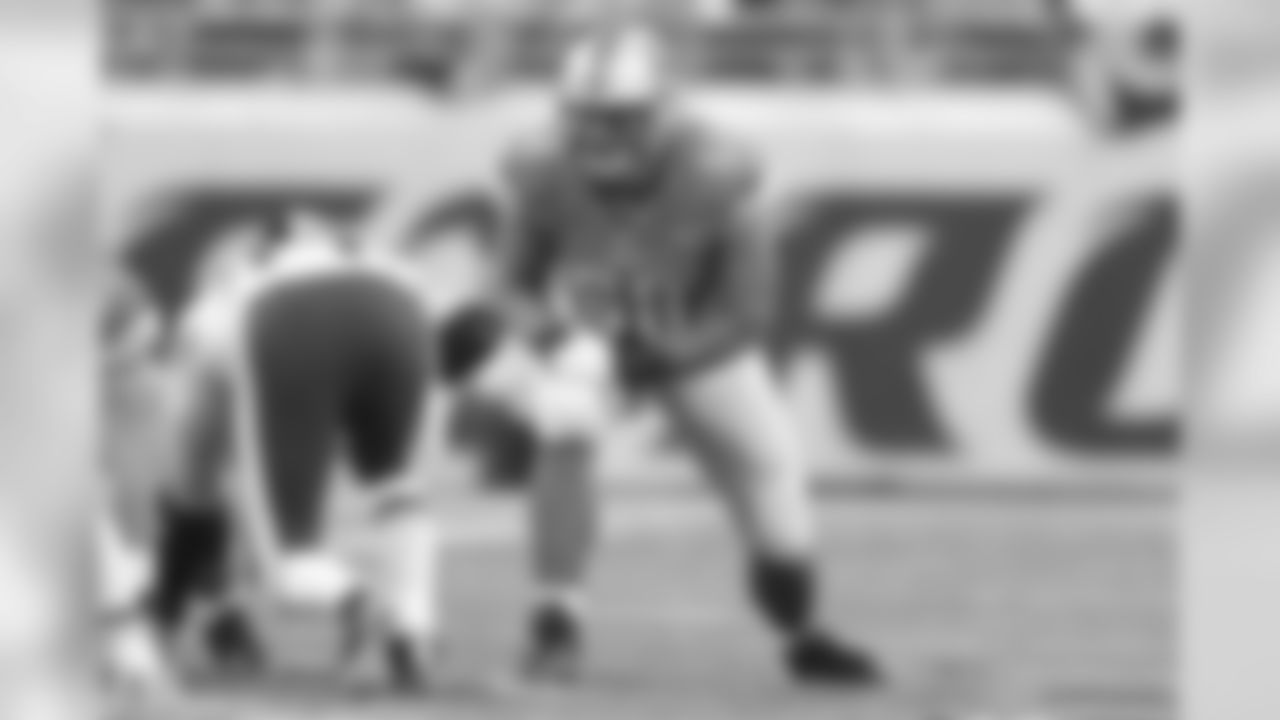General manager Bob Quinn's evaluation of how the Detroit Lions' 2016 draft class performed on the field was pretty much the same as what he saw on paper.
Quinn targeted the trenches on offense and defense, and looked for solid contributors throughout the roster in using the Lions' 10 picks to upgrade the team's talent level and overall depth.
In that regard, the draft lived up to projections. By the end of the season, the Lions' top three picks were starting linemen – Taylor Decker and Graham Glasgow on offense, A'Shawn Robinson on defense.
"I think a lot of the guys made strides," Quinn said in his postseason press conference. "We had a lot of contributors from the rookie class. We're happy with how things ended up with most of them, but I think like any rookie player, the rookie player's biggest jump is from year one to year two.
"So if the guys on the team now that were our draft picks, they come back better than they were this year, then I'll be happy. If they regress, I won't be happy. But I'd say overall, it was a solid year."
Comparing draft picks and draft classes is an inexact exercise. Projecting how a rookie will develop is impossible. However, there are some logical comparisons based on players drafted in the same range.
Based on that, what follows is how the Lions' 2016 draft picks stand after their rookie season, and how they compare to other Lions players drafted at the same position and in the same range in the draft.
These are the players, by round, and the comparisons:
View photos of Taylor Decker from the 2016 season.















1. On the line: OT Taylor Decker, Ohio State - Durability and consistency in performance marked Decker's rookie season. From the first minicamp practice, there was no doubt that he'd be the left tackle, and he played every snap there in all 16 regular-season games, plus the playoff loss to Seattle. He's already good, and bound to get better.
Comparison: A logical pick is Jeff Backus, the Lions' first-round pick in 2001. Backus had his detractors, but he missed only one game in 12 seasons.
Lomas Brown is a stretch comparison, but that would be true for any draft pick. Brown played 18 NFL seasons, the first 11 with the Lions, and made seven Pro Bowls.
2. Inside power: DT A'Shawn Robinson, Texas – An interior force who got better and more productive as the season went on. Robinson started five of the last six games, plus the playoff game. He got enough penetration up front to register two sacks, seven pass breakups and six tackles for loss. His body slam of Cowboys rookie running back Ezekiel Elliott in Game 15 showed his power.
Comparison: Robinson is a taller version of Jerry Ball, the Lions' third-round pick in 1987 who played mostly on the nose as a Lion and made three Pro Bowls in six seasons in Detroit before moving on. Ball was a little quicker, and just as powerful. Ball and Robinson are both from Texas.
3. Position double duty: C/G Graham Glasgow, Michigan - His versatility – and ability – were invaluable. Glasgow started seven games at left guard, then the last four and the playoff game at center when Travis Swanson went down for the season with a concussion. Wherever Glasgow settles, he was a gem in the third round.
Comparison: Glasgow has a lot of the grit that Dominic Raiola showed as the starting center from 2002-2014. Glasgow also has the versatility displayed by Kevin Glover, who alternated between guard and center early in his career before settling in as a three-time Pro Bowl center. Raiola (2001) and Glover (1985) were both second-round picks.
4. Safety net: Miles Killebrew, Southern Utah - Killebrew played well in a limited role as an extra defensive back. He also contributed on special teams. His one interception was on the last possession of a road win over the Saints.
Comparison: William White, also a fourth-round pick in 1988 from Ohio State. White did not start as a rookie but started 79 of 80 games at safety the next five years before moving on in free agency.
5a. Line depth: Joe Dahl, T-G, Washington State - He finished his college career as a tackle but was drafted to play guard. Dahl was active for six games and was used in the guard rotation late in the year. His highlight play was driving a Dallas defender halfway to Fort Worth on a TD run by Zach Zenner.
Comparison: Manny Ramirez, a fourth-round pick in 2007, was a reserve for two years and a starter for the Lions for 12 games in 2009. He moved on to Denver, where he was a full-time starter at center and guard from 2012-14 before returning to the Lions in 2015 as a part-time starter.
5b. Learning curve: LB Antwione Williams, Georgia Southern - Williams had three starts in 14 games and showed some athletic ability. He got scant playing time late in the season with veterans Tahir Whitehead, Josh Bynes and DeAndre Levy ahead of him.
Comparison: Whitehead. The start of their careers was similar. Whitehead also was a fifth-round pick in 2012 out of a school not known as a football powerhouse (Temple). Whitehead spent two years on special teams before making his first start at middle linebacker in 2014. Williams is serving a similar apprenticeship.
6a. QB development: Jake Rudock, Iowa and Michigan – Rudock was signed to the practice squad after a solid training camp and preseason performance, and promoted to the active roster late in the season.
Comparison: There are two choices. In playing style – a pocket passer – he's most similar to Dan Orlovsky, a 2005 fifth-round draft pick. Coming from the Big Ten, there's a comparison to 2007 second-round pick Drew Stanton, more of a scrambler.
6b: Hustle up front: DL Anthony Zettel, Penn State – His rookie season reflected the judgment that he could be a versatile asset on the front four. Zettel was aggressive and alert and managed one sack in 13 games, without a start.
Comparison: Based on draft position and rookie results, 2010 seventh-round pick Willie Young out of North Carolina State is a valid comparison. Young was drafted 213th overall (Zettel was 202nd) and was an effort player who did not start until his fourth year. Young's best seasons have been in Chicago, where he's had 24 sacks in three years. 6c. Snap judgment: Long snapper Jimmy Landes, Baylor - He was drafted to compete with Don Muhlbach, but the competition never really developed. Landes wound up on injured reserve, and Muhlbach continued on with another splendid season.
Comparison: There is none. However, the Lions did draft a specialist in the seventh round in 1980 – kicker Eddie Murray, who spent the first 12 years of his 20-season career as a Lion.
7. On the run: RB Dwayne Washington, Washington - He showed promise in the preseason and had some value in short yardage. He played 15 games with two starts, but finished with a 2.9-yard average per carry.
Comparison: Aaron Brown, a sixth-round pick in 2009, also showed promise as a rookie – two starts, 27 carries, 131 yards and a receiving TD. Brown was gone after three seasons. Washington could develop and have a longer, more impactful, career.














